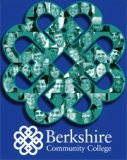Stephanie Vie is making a strong case for peeking over the wall between the LMS as acceptable tech medium for student learning, and social networking sites — deemed by many to be frivolous and have no pedagogical uses. This is one of the first peer-reviewed, reasoned articles on why web 2.0 has to matter to us
http://webpages.csus.edu/~sac43949/PDFs/digital%20divide%202.0.pdf

Permalink
YEP AND YEP!! I couldn’t agree more…Except to say that my experience having students use social networking sites to showcase their work and communicate with one another tells me that we still know more about the technology than our students do…with the exception of just a few students. But, that’s good news, too: The students who are fluent in the use of these sites train both classmates and Language Lab Facilitators…(and ME!)…This engenders a non-hierarchical model of teaching and learning that empowers students and keeps me on the cutting edge. Best of all, students leave Spanish after up to five semesters of work with an electronic portfolio of their work that documents their progress from first, awkward steps in the language to strong communication skills (written and spoken). And, each student’s page expresses his/her own creative vision. Even though using a social networking medium for classes adds to my workload, students’ pride in their accomplishments, as well as the value of the ePortfolios, make it all very worthwhile.
Permalink
I’m quite astonished that anyone would question the need to fully integrate Web 2.0 tools into every aspect of the curriculum. A multimedia, always-on, instant gratification, globally networked reality is the one most college-age people inhabit. And, at least in the case of big multinational corporations, that’s increasingly the reality they’ll work in after graduation as well.
However, the fundamentals don’t change; poorly researched, poorly reasoned, poorly formulated crap is still just that, no matter how much technological lipstick is applied to it. Right now there’s a need for a reciprocal relationship, where students educate the teacher on how to use the tools, and the teacher educates students on how to use them effectively.
Permalink
Lois, Dwight, thanks for comments. Yes, it seems that we don’t want the gap to widen between where students spend their days and where faculty teach from. At the same time, there is another gap in the mix: waiting for educational research to substantiate that 2.0 technologies support student learning and enhance student outcomes (mainly grades and graduation rates). The tech is still “new” in academic terms, but as the latest CCSSE (Community College Survey of Student Engagement) confirms: the new technologies, including mobile technologies, are working to _engage_ students. Does engagement lead to retention lead to degree completion? Oh, somebody, please answer that question!